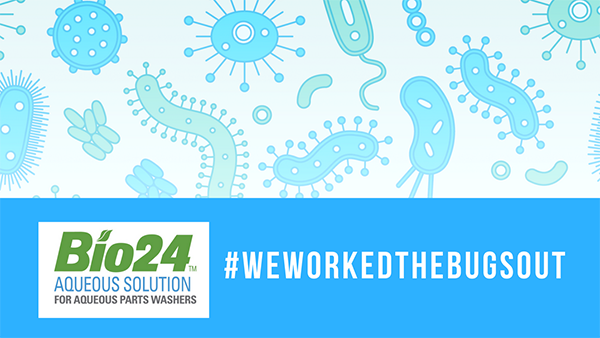Addressing parts staining in aqueous bath cleaning
What is staining as it relates to aqueous parts cleaning you might ask? It is an industry term companies use when an aqueous bath leaves soils, or oily residues, on a part after the parts have been through a complete cleaning cycle. For all the innovations that have made the cleaning industry what it is today, aqueous parts cleaning is relatively straightforward. Soiled parts go into the parts washer, a process such as high-pressure spray or immersion agitation is performed by the machine and, ultimately, the parts come out clean at the end of the process.



.jpg) As trichloroethylene and other solvents come under increased scrutiny for their health and environmental impacts, solvent users are left seeking more sustainable operating alternatives. In response, the use of toxic solvents to clean contaminants from metal parts has given way to aqueous-based options.
As trichloroethylene and other solvents come under increased scrutiny for their health and environmental impacts, solvent users are left seeking more sustainable operating alternatives. In response, the use of toxic solvents to clean contaminants from metal parts has given way to aqueous-based options. Ultrasonic washing, abrasive blasting and other techniques that remove baked-on carbon from automotive or industrial parts composed of steel alloys are not applicable typically to aluminum parts. Just one hour in an ultrasonic washer can result in deformation – namely starring and spiderwebbing – of the relatively soft aluminum surfaces, undermining aesthetic appeal as well as function.
Ultrasonic washing, abrasive blasting and other techniques that remove baked-on carbon from automotive or industrial parts composed of steel alloys are not applicable typically to aluminum parts. Just one hour in an ultrasonic washer can result in deformation – namely starring and spiderwebbing – of the relatively soft aluminum surfaces, undermining aesthetic appeal as well as function. One of the most critical elements, and challenges, for the food and beverage industry is creating and maintaining a clean, safe, and sanitary environment for producing consumable products. According to the U.S. Centers for Disease Control and Prevention, 48 million people in the U.S. contract a foodborne illness each year.
One of the most critical elements, and challenges, for the food and beverage industry is creating and maintaining a clean, safe, and sanitary environment for producing consumable products. According to the U.S. Centers for Disease Control and Prevention, 48 million people in the U.S. contract a foodborne illness each year. When attempting to answer questions about what cleaning solutions work best for certain applications and which are most cost effective, it’s important to also consider what type of parts washer would work best for the solution, the soils being removed, and the cleaning process itself.
When attempting to answer questions about what cleaning solutions work best for certain applications and which are most cost effective, it’s important to also consider what type of parts washer would work best for the solution, the soils being removed, and the cleaning process itself. As more manufacturers are embracing sustainable manufacturing methods, technical colleges and universities are experiencing an increase in demand for graduates that can implement processes that incorporate methods of "pollution prevention," or P2.
As more manufacturers are embracing sustainable manufacturing methods, technical colleges and universities are experiencing an increase in demand for graduates that can implement processes that incorporate methods of "pollution prevention," or P2.


